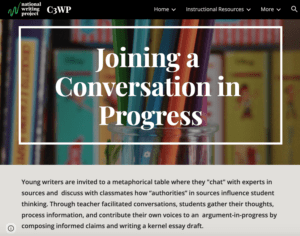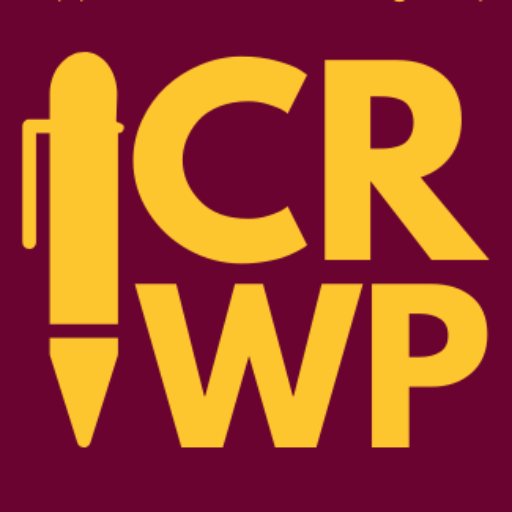On December 10, 2022, the Chippewa River Writing Project hosted a free continuity event: NCTE Comes to the CRWP. Teacher consultants from the CRWP who presented at the NCTE Annual Convention in November shared their presentations with us. This is the last post in a three-part series describing the presentations from our TCs.

Having been provided the “opportunity” to consider writing a book about her approach to using technology in her middle-level classroom, Chippewa River Writing Project teacher consultant Jill Runstrom has — nearly three years later — earned a new job, developed new curriculum, and been a remote teacher for a year of pandemic learning. This entire experience is documented in her upcoming NCTE book, Literacies Before Technologies: Making Digital Tools Matter for Middle Grades Learners. Based on the NCTE statement, “Beliefs for Integrating Technology into the English Language Arts Classroom,” the book will be published in 2023 as part of their “Principles in Practice” series.
During the 2020-21 school year, Jill collaborated with her team of three other ninth-grade teachers at Skyline High School in Ann Arbor, Michigan, and developed a number of unit and lesson plans that were adapted for remote learning, yet are also applicable in face-to-face or online, asynchronous learning as well. The book begins by elaborating on the four key ideas in the beliefs statement — especially the principle that led to the title of the book, “Consider literacies before technologies” — and these principles helped Jill to rethink her approach to the traditional ninth-grade curriculum.
Units described in the book include:
- “Close Reading with Digital Tools” by exploring with GDocs and Kami
- “Writing to Research, Inform, and Explain” by exploring with EdPuzzle and infographics
- “Reading Literary Texts in Substantive Ways” by exploring activities for dialogue, in person and online using GSuite tools
- “Arguing and Persuading Across Media” by exploring sources and creating social media

In one of the units, “Writing to Research, Inform, and Explain,” Jill described the ways that she took key lessons from the National Writing Project’s College, Career, and Community Writers Program, or C3WP. She adapted one of the lessons on “joining a conversation in progress” and building a kernel essay, and talked through the ways that this ultimately led to students writing an argument essay that was complemented with an infographic. By inviting students to make an argument through traditional, academic writing and through the affordances of visual media in infographic creation tools like Canva, students are practicing multiple literacies simultaneously.
Also, Jill described the ways that her school relies on principles of mastery learning, and that many of the activities in the book employ collaborative, project-based approaches to helping them work, especially when they were still in Zoom breakout rooms. One activity, “hexagonal thinking,” described by Betsy Potash on the Cult of Pedagogy blog (a “force copy” of the GSlides template available here), invites students to mix and match different characters, themes, ideas, and situations from a book they are reading to make a three-part connection that they can then discuss. From these “hexagon maps,” students can then begin to write a literary response, drawing details and examples from the poem, story, or novel that they are studying.
As she concluded her presentation, Jill invited us to consider two overarching questions that continue to drive her own innovative instruction:
- What do newer technologies assume about us as teachers, our principles, and the process of teaching?
- How has your approach to digital tools, computers in the classroom, and digital literacy shifted — and continue to shift — since March of 2020?
These questions, she believes, will continue to help us consider literacies before technologies, putting our students’ needs as readers and writers, thinkers and creators at the center of our instruction. She works to help students continue to get what they need, both as individuals who are making sense of a complicated world as well as students learning the skills of English language arts.
For more on Jill’s presentation, her slides are available as a “view only” document, and she can be reached at <runstromj@aaps.k12.mi.us>.

Leave a Reply
You must be logged in to post a comment.